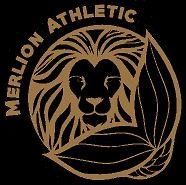Golfer’s and Tennis Elbow - What actually are they? And how to prevent and recover from them.
If you have ever felt pain on the inside or outside of your elbow joint, there’s a good chance you’re dealing with a case of golfer’s or tennis elbow! These conditions are very common, and despite their namesake, can be caused by a variety of activities, which we will cover in the post.
Why the names?
The layman terms of golfer and tennis elbows are really to give a visual of the type of movements that, when repeated many times, (this is important) can cause the pain and symptoms felt in the elbow.
Tennis elbow aka lateral epicondylalgia meaning : ‘pain’ found in the lateral condyle of the elbow.
Golfers Elbow aka medial epicondylalgia meaing : pain’ found in the lateral condyle of the elbow.
NOTE: Epicondylalgia now replease the previous term of epicondylitis meaning : inflamation found in the condyle of the elbow. Recent scientific studies have shown it is not an infalmatory condition, but has many different nuances and so should more accurately be described as ‘pain’. (For more details on this read Esther J Waughs ‘Lateral epicondylalgia or lateral epicondylitis: What’s in a name?)
Causes and Symptoms
Lateral epicondylalgia - is a pain felt on the outside of the elbow. It happens when the tendons that attach to the forearm muscles become strained, often from repetitive motions, like swinging a racket, frequent use of hand tools, repetivie movements in a certain profession (think dentistry, painters, muscicitain, auoto workers, clerical etc). Can also be due to weak shoulder and wrist muscles. This last bit is important when looking at prevention
Medial epicondylalgia - is a pain felt on the inside of the elbow
Prevention
Weak shoulder muscles can contribute to tennis elbow because they disrupt the balance of movement and muscle engagement in your arm. Here’s how it works:
When your shoulder muscles are weak, your body compensates by putting extra strain on the muscles in your forearm and elbow. Normally, the shoulder and upper arm muscles help absorb the force during activities like swinging a racket, lifting, or typing. If the shoulders aren't strong enough, your forearm muscles have to work harder, which can lead to overuse and strain.
Since tennis elbow is caused by the overuse of the tendons that attach to the forearm muscles, weak shoulders indirectly lead to extra pressure on these tendons, making injury more likely.
Improving shoulder strength, along with overall arm stability, can help distribute the load more evenly during arm movements and reduce the risk of tennis elbow.
Pain Maangement
If you are currently suffering from symptoms, the first thing you need to do is rest! Rest from all movements that involve heavy lifting, repetive holding and/or striking ie racket and bat sports, hammering, weight lifting etc. Go through the R.I.C.E. procedure (Rest Ice Compress Elevate - i would also add massage and heat to these as well). Remeber just because your suddently feeling the symptoms doesn’t usually mean it’s suddenly happened, its been abuse of a period of time, and likewise will take time to heal. So go slow to grow!
Work out Movements
As they say prevention is better than cure, so even if you don’t currently suffer from any of the symptoms I highly recommend making the following movements part of your weekly movements/programming. If you do suffer from these symptoms, once you have got the pain management level to a 2/10 (10 being unbearable worst pain ever) I would begin on the movements.
The movements are simple and can be done 2 - 4 days a week (more isn’t necessarily better). Go with feel. If you feel good the day after doing these then do them again, or pick a choose a movement. Everyone is different so go with feel.
Sample Exercise Program
The video links talk about how to progressively overload the movements so make sure to take note on that. The idea is to not only prevent the syptoms but contiuely strengthen that part of your body, much like you would for your legs, chest, abs etc.
Also there is a link to the wrist strenthening bar I use under the Equipment and Services I recommend page on the website.
2 - 3 Sets
8 - 10 reps Wrist Ulnar-Radial Flexion - hammer grip
8 - 10 reps Wrist Ulnar-Radial Flexion - ski pole grip
Rest 30 - 45 sec between sets
Use a slow and steady pace
2 - 3 Sets
10 - 12 reps Wrist curl to finger curl
Rest 30 - 45 sec between sets
Use a slow and steady pace
Here’s to strong and pain free elbows, wrists and forearms - you got this!

